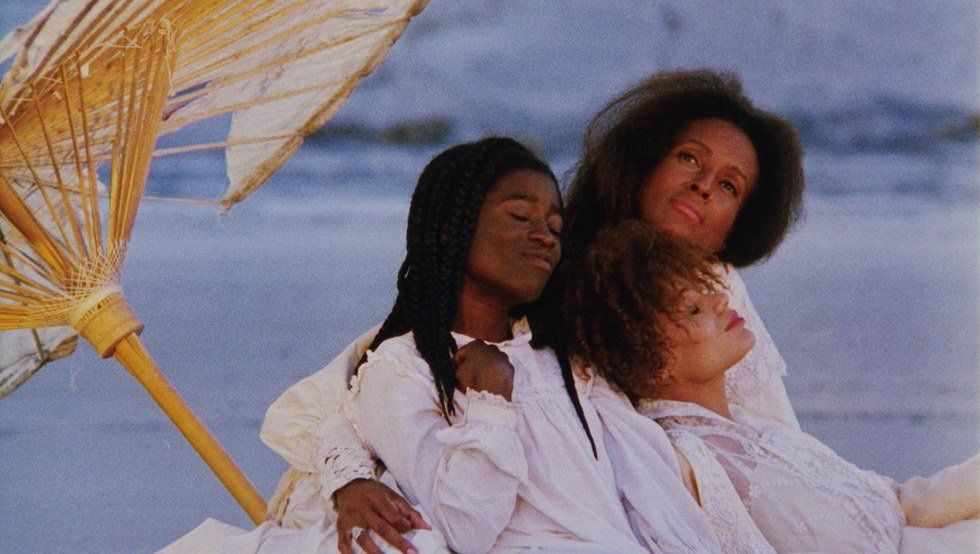“Incidents in the Life of a Slave Girl” and Daughters of the Dust both show strong connections to postcolonial theory. Both examples reveal the problematics of post-colonial identity, including the relationship between personal and cultural identity with such issues as double consciousness and hybridity.The sources also respond to, and comment upon, the characters, themes, and assumptions of a colonialist work.Harriet Jacobs and Julie Dash both understand the need for explicit and allegorical representations of colonized societies to express the true oppression of the situations and communities.
Double consciousness can be seen as the main aspect of “Incidents in the Life of a Slave Girl”. The protagonist Linda Brent’s identity can be seen as divided and changing throughout the book. When she is young she is innocent and unaware of her life. Brent is born into slavery and has little self-identification.As she grows and has experiences she gains the knowledge of what is occurring to her and how it affects her sense of self.As this realization of self-grows stronger she only becomes more confused and conflicted as to where to aim her focus. She is torn between defending herself and helping her family. As she ages, she feels more responsible for her children and again shows a double consciousness as she faces her troubles.
The film Daughters of the Dust portrays double consciousness in almost every character shown. Nana and Eli Peazant show strong struggles with identity. The Christian influences Nana brings to the film show how she has been altered and challenged with change. Her strong fight to stay on the island also displays her unwillingness to leave the past behind and begin a new future. It is clear that she is strong in her religion but has obviously been convinced of change before due to her odd beliefs. Eli, Nana’s grandson, is also faced with a troubling identity. The concept of leaving the island intrigues him but simultaneously he is afraid of change and is comfortable with staying with what seems to be the most familiar. Because of how troubling the situation is to Eli, he loses the sense of who he truly is and what values are most important to him. Due to the concept of Nana being the matriarch of the society, one would think she would have a true idea of self. The way she holds on to the past shows that she is not comfortable with changes and is also uncomfortable with herself.
Because hybridity is a cross between two races, religions, or cultures it can be argued that this is another key theme of “Incidents in the Life of a Salve Girl”. When Linda is traded around from White owners, a different culture is learned in each. As she travels she brings her own set of cultures with her. The most obvious of these is the race difference between her and her owners. The less obvious would be the family structure that she is used to is always changing. The hybridity of these events pushes and challenge her to avoid the fear that comes with racial discourse.
The same concept of hybridity is displayed in Dash’s film Daughters of the Dust. Viola has already moved away from the island and is now returning again. She shows strong hybridity due to her cross-cultures of living in both the North and the Island. She also has since become a devoted Christian and this intersects her new religion with the old one from her original culture. Mr. Snead struggles with this as well due to the notion that during his time on the island he has to learn the new culture. Being originally from the North there are many aspects he needs to learn and become accustomed too. His hybridity is seemingly opposite from the others due to their fears of leaving, but his rational fear was arriving.
The film responds well to the assumptions of true post-colonial work. The exploitation and external control can be seen clearly as the general themes of this post-colonial work. The Christian values that some of the Peazants possess show the effects of colonization and westernization. When Eula is raped by a White man from inland, both she and Eli along with the whole community are gravely affected. This would mean the community has been tainted by the White man and he will forever have left his mark on their society. Viola returning as Christian also pollutes the culture with more western ideals and notions. All of these events will eventually lead to the migration they choose to make north. Stereotypically of post-colonial literature the White man has inserted himself into their daily life, maybe not directly, but has caused some form of disturbance causing change.
The novel comments on the themes of post-colonialism in a very strong fashion. Jacobs does this by the means of psychological torture. In general slave narratives and other post-colonial works, the main themes focus on the physical pain and suffering that is associated with the concept. Jacobs spends more of her time writing about the mental strength Brent needed and the abuse she endured. The mental pain inflicted by the White owners on her was almost unbearable. The physical effects of forced sexual relationships would be a difficult task to pursue, but the mental aspects seem worse. The control and rules protected by the White man prohibit her to marry whom she wants and thus forces her into relationships. Some of these are romantic, others sexual, but none of them are for long. The White man has imposed colonialism on Brent and her family. They are under full control and full influenced by an outside source.
Julie Dash understands the need for allegorical representations of colonized communities. This is the clearest way for her to express the true oppression endured. Dash does not want the viewer to take every character at face value. Each member of the family can be seen as an allegory for something bigger. There are a seemingly perfect three generations of the family represented. There is the patriarch, the matriarch, the daughters, granddaughters, the babies, the men, the outsiders, and the unborn. It paints a clearer picture to have all of the members of the society from the same family and holding similar beliefs. The viewer is able to gather an opinion on the decision from every member. This is important because there are very few communities in which all of the members are truly related. This stems from the original African concepts of tribes and families not marrying within tribes. The concept that Dash uses to depict the situation is a metaphoric one used to simplify the experience. The use of the unborn child allows for an allegorical representation of all of the generations thoughts put together. The child seems to understand everyone’s true stance on the topic. This is the only character that knows and understands every generation’s process, besides the viewer.
Harriet Jacobs uses explicit representations of the society to show the real oppression Brent had to withstand. Jacob’s readers would not have benefited from a metaphor or any kind of interpretation. Her work is best read for the real, harsh truth it carries. Because it is a true story all of the events convey colonialism and evoke emotion. Brent struggles to protect herself from her master and is torn between her desire to run away and her need to protect her children. Dr. Flint will not consider selling her so he banishes her to his plantation. Her Aunt tries to talk her out of running away but she discovers that her children will soon be field slaves forever. She escapes the plantation and precedes into hiding, leaving her past life behind and taking the steps away from slavery. Flint eventually puts Brent’s children and brother in prison but she tricks Flint into thinking she is living in the North. Sands makes a promise to free all of them, but this turns out to be false and they are tricked. Every event that occurs in this tail has a purpose. Each step on her journey is meant to show the awful truth of colonialism and slavery. There is no need for analogies or tails, just facts. This is how Jacobs explains the true oppression faced in this time.
Both the film and novel are delicate examples that reveal the problematics of post-colonial identity, including the relationship between personal and cultural identity with such issues as double consciousness and hybridity.Both authors respond to, and comment upon, the characters, themes, and assumptions of a colonialist work.Harriet Jacobs and Julie Dash both understand the need for explicit and allegorical representations of colonialized societies to express the true oppression of the situations and communities. “Incidents in the Life of a Slave Girl” and Daughters of the Dust are both post-colonial primary sources that reveal undoubted truths.
Works Cited
Daughters of the Dust. Dir. Julie Dash. Prod. Julie Dash. By Julie Dash. Perf. Adisa Anderson and Vertamae Smart-Grosvenor. Kino International, 1992.
Jacobs, Harriet A., Lydia Maria Child, and Jean Fagan. Yellin. Incidents in the Life of a Slave Girl: Written by Herself. Cambridge, MA: Harvard UP, 1987. Print.





















